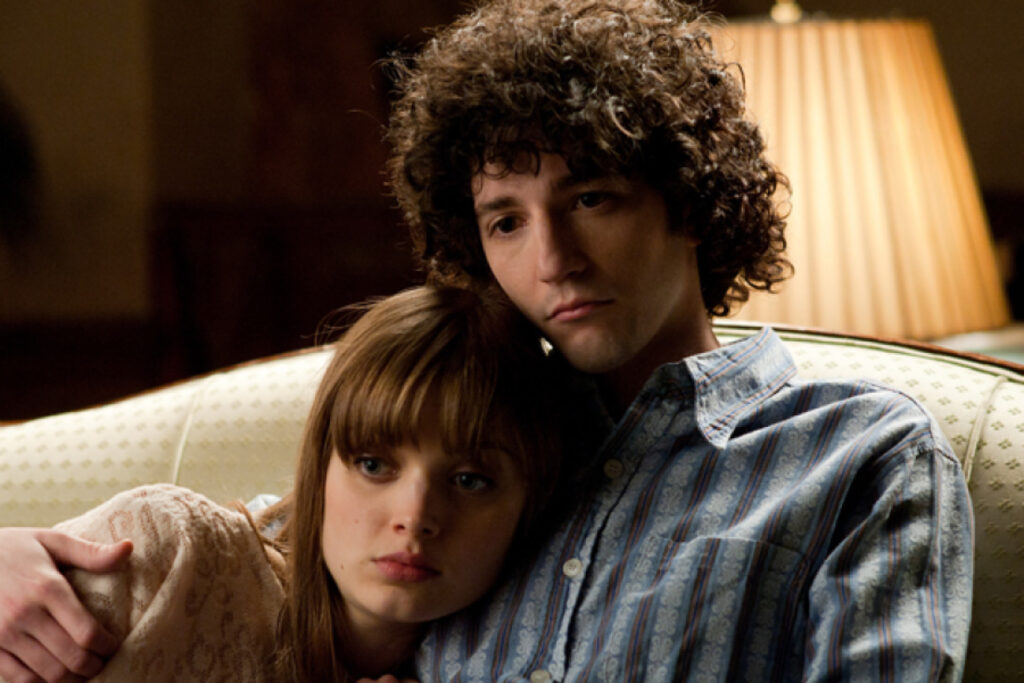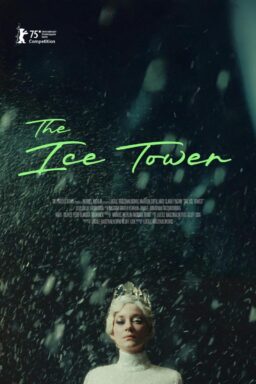The first theatrical feature film written and directed by David Chase, the creator of “The Sopranos,” is an autobiographical tale about the formation of an artistic sensibility. John Magaro plays Doug Damiano, a northern New Jersey teenager whose father Pat (James Gandolfini) is a hot-tempered, Archie Bunker-style reactionary who suffers from psoriasis, and whose mother Antoinette (Molly Price) is a depressive who regularly threatens to kill herself. The movie is narrated by Doug’s sister Evelyn, played by Meg Guzulescu, in the manner of a third-person novel, packing three films’ worth of incident into an hour and 50 minutes yet somehow never feeling rushed.
The story covers a six-year timespan beginning in 1962 and ending in 1968, with the hero moving to Los Angeles in the company of girlfriend Grace (Bella Heathcote). There are sardonic bits of observational humor about how teenagers sound pretentious to us but not to themselves, and some effective moments of domestic distress, revelation, and reconciliation. All of the period details, from the girls’ short skirts and go-go boots to the boys’ modified mop-tops and electric folkie fuzz-tops, are perfectly realized, and are treated as enriching details rather than cheap sight gags. The musical numbers are largely performed on the spot and treated as documentary events. For the most part, they are allowed to play out at full length, something movies rarely do, perhaps for fear that the sight of artists doing the thing they’ve been training to do their entire lives is inherently boring and that the director should either cut away from it as quickly as possible, or layer conversation over it.
In the end, though, the movie is less of a relationship drama set in an earlier era than an examination of the effect of time, culture, and history on the formation of the personality. This was also a central topic of “The Sopranos” as well as “Mad Men”—not coincidentally, a series by one of Chase’s protégés, Matthew Weiner. Do we move through history or does it move through us? Do we make decisions, or do decisions make us? These are the big questions, and Chase’s movie contemplates them through action, simply by observing the characters as they go about their business.
Magaro starts out as a sardonic yet wide-eyed teenager who wants to be a rock n’roll star. His band, which is fronted by a pretentious twit named Eugene Gaunt (played by Jack Huston), gets caught up in the adrenaline rush of 1960s rock n’roll worship. The boys get way ahead of themselves early in the process, fantasizing about going to England and giving interviews to magazines before they’ve learned to play their instruments. The movie’s cutting sense of observation, which is leavened by the humor of picturing oneself and one’s friends and family in hindsight, makes the characters seem sweetly deluded rather than insufferable. When they do become insufferable, the universe has a way of punishing them, just as it did on “The Sopranos.”
Although produced on a modest budget, “Not Fade Away” has one of the most extraordinary soundtracks of any film of the last 20 years, probably thanks to the connections of Chase and his co-executive producer, music supervisor, and former supporting player, Steven Van Zandt. James Brown, The Rolling Stones, Bo Diddley, The Moody Blues, Small Faces, Van Morrison, and Bob Dylan are all represented, and at the very end, as the credits roll, The Beatles come in. True to “Sopranos” form, the band covers many tunes that you’d expect any young band of that era to cover, such as Dylan’s “Subterranean Homesick Blues” and The Rolling Stones’ “Time is on my Side,” but many of the needle-drops that fill out the soundtrack are deeper cuts: Dylan’s “She Belongs to Me,” for instance. Although the film ends with a music budget flex, a Beatles song, it’s not a cliched selection that you’ve heard in other movies, TV shows, or commercials: it’s “I Got a Feeling” from “Let It Be,” which was never released as a single.
On a “Sopranos”-related note, I urge anyone still clinging to a reductive interpretation of the final four minutes of Chase’s series to watch this movie and be disabused of preconceived notions. Chase nearly flat-out warns the viewer earlier in the movie that his allegiances are to mid-century arthouse head-scratchers like Michelangelo Antonioni’s “Blow-Up” when Doug and Grace go to see that movie in a theater. They even comment on the director’s eerie use of silence and the hiss of wind through trees—characteristics that would also distinguish “The Sopranos.” The final few minutes serve up an Antonioni-esque puzzler where—as in Holsten’s diner—the point is not to figure out what happened but to talk about what you think it meant. Chase is on record saying he probably won’t direct again because it’s too much of a slog. That’s too bad, because this is a sneakily great movie that seems more solid and insightful with each re-watch.












